07775 853 348

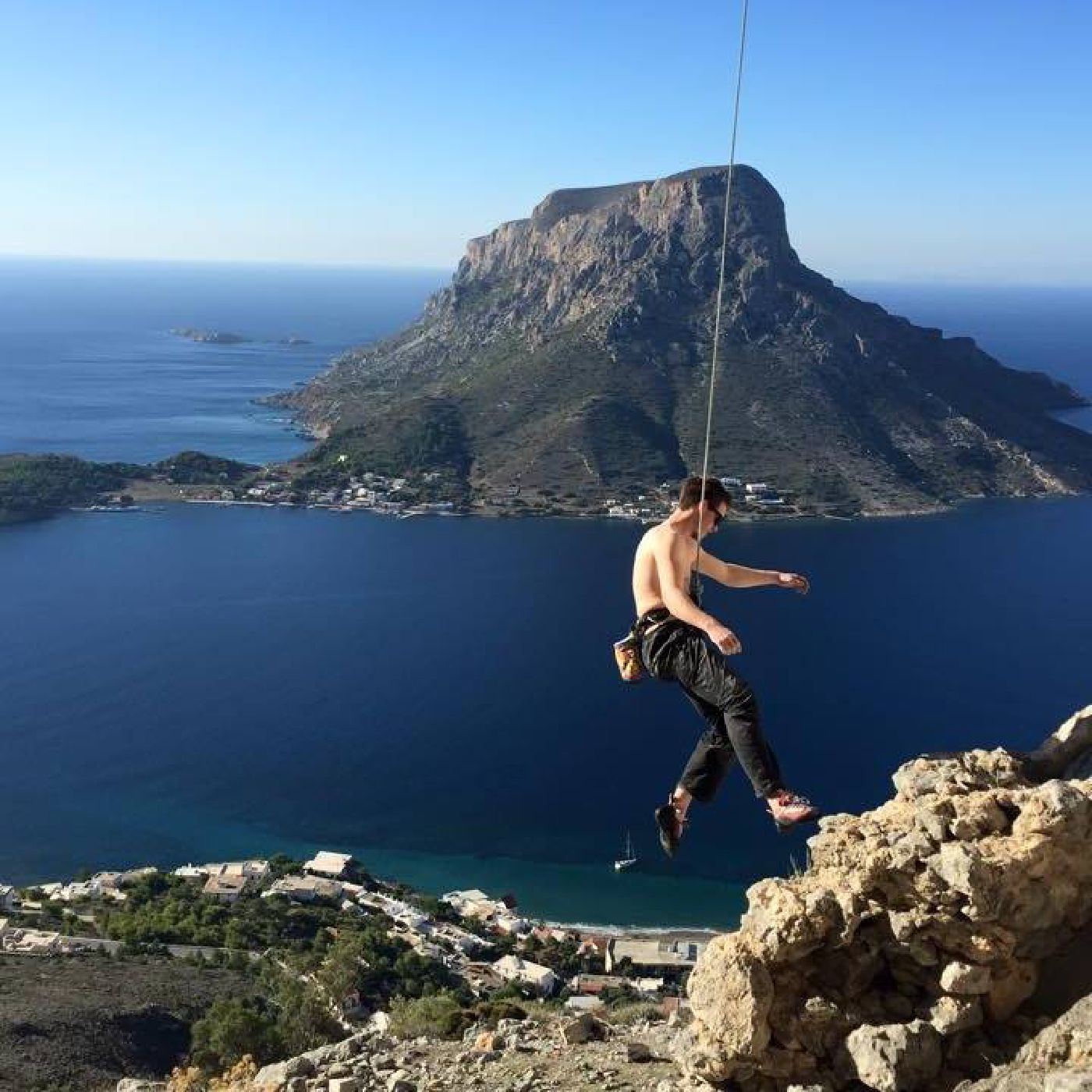
This is the first in a series of articles, where I will be writing on suggestions of what different climbing racks consist of, from our point of view. We will be looking at sport climbing, trad climbing, aid climbing, winter mountaineering, and winter climbing. We have already looked at the scrambling rack in one of our previous articles.
Let’s firstly look at the sport climbing rack. Sport climbing is the usual progression from indoor climbing. Whether you are a beginner wanting to take your skills outside. A trad climber wanting to give up the headache of figuring out whether your last piece of protection will hold. Or you have been borrowing your friend’s kit, but are looking to invest and buy your own. We will list the essential bits of kit, and the optional ones.
The kit does change depending on the venue, i.e. route length, multi-pitch or single pitch, and/or if abseils are required.
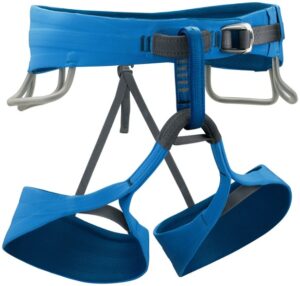
With sport climbing, one tends to have fewer bits of kit hanging off your harness, so 2-4 gear loops will do. As sport climbers we also prefer something which is lightweight. But on the other hand, if you are looking to do long multipitch routes. Or are likely to hang lots in your harness, something which is padded will feel more comfortable.
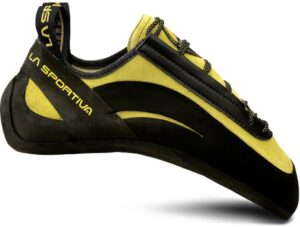
These are down to personal preference. Some of us like to feel pain, by having a pair of shoes 3 sizes too small, others like to wear socks in their shoes. A suggestion I can make is if you are climbing single pitch, you can go for something a little tighter. If climbing long multipitch routes, something comfier would be more enjoyable. Also, a more downturned shoe would be beneficial on overhanging routes.
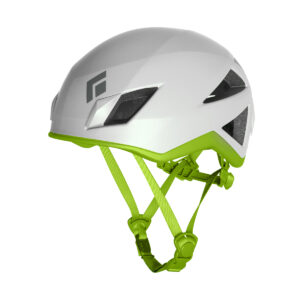
This is a hot topic. To wear one or not… Some of us do, some of us don’t. It can be a hinderance, but it can also save your life. I would suggest always to wear a helmet, as the head is very vulnerable. But let’s try and narrow it down, for you who sit on the fence with the subject. Always wear a helmet on multipitch climbs, on climbs with stepped overhangs, or climbs which require one to keep the head close to the wall for balance on some of the moves.
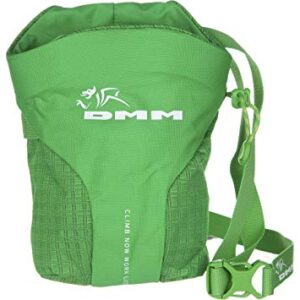
Climbers use chalk, as it absorbs moisture from your hands, so as to provide better grip. Again, everyone is different. Some of us produce more sweat than others, and this can be a helpful tool to climb further and harder. One thing I would suggest is to attach the chalk bag with a 5 or 6mm bit of rated cord. This way you will always have something that can be used for abseiling off. Or retreat from a route, without having to leave gear behind.
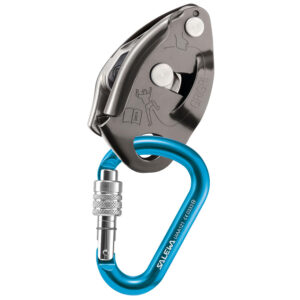
With so many belay devices on the market, it can be difficult to choose one that suits you. For sport climbing the ideal device would be an assisted braking belay device like the Edelrid Eddy, Mammut Smart, Petzl GriGri, the Camp Matik, etc…. Some of these have moving parts, some of them do not. Some of them have anti panic function, some of them almost need no attentive belayer (Wildcountry Revo). Again, it is down to personal preference. The benefit of an assisted braking device, is that it creates more friction, hence the belayer will use less effort to hold the dead rope. On multipitch climbs, it is useful to also carry a belay device that allows two strands of rope to run through at the same time, like an ATC, for when you are using twin ropes or abseiling.
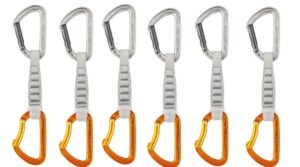
Which quickdraws to get? Lightweight, wire gate, bent gate, heavy duty, thick tape, thin tape, long, short, or extendable. As a beginner, it can be hard to choose which set of quickdraws to go for. For sport climbing, if you are likely to fall off a lot, the quickdraws with the wider tape will provide longevity over the thinner taped quickdraws. Again, this is down to personal choice. If you are looking to do long multipitch routes, you may want to choose a lighter weight quickdraw, or go for a halfway house.
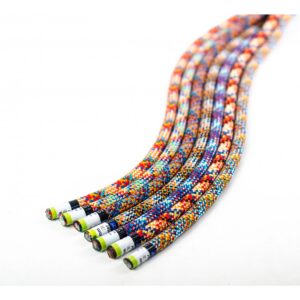
For single pitch sport climbing venues, single ropes are used. These range from 8.5-10.5mm. Depending whether you want to go lightweight, and climb on what sometimes looks like a shoelace. Or prefer the longevity of a thicker rope, which is more robust, and can provide a psychological reassurance of safety.
Single ropes can also be used on multipitch climbs, if you are certain that you will get to the top. Or these can be combined with a thinner rope, which can be carried in a rucksack by the second, to then use in combination for abseils.
Or you can use twin ropes on multipitch climbs. Rarely used in the UK, these are two thin ropes, usually less than 8mm. These are clipped into the same protection, used like a single rope. The benefit of using twin ropes is that you can abseil the full length of the rope.
Just make sure, whichever rope(s) you are using, that this is the right thickness to use with the belay device(s) you have. This information can be found on the belay device itself, or on the manufacturer’s website.
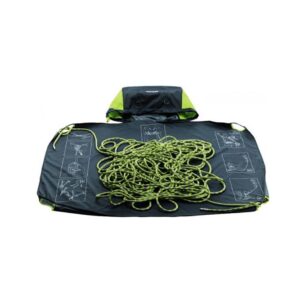
Rope bags are very useful to keep your ropes clean from dirt, and organised when stowed away. They also allow you to easily move the rope quickly and efficiently, between routes. If ropes are continuously covered in dirt and abrasive particles, this will reduce the ropes performance and longevity.
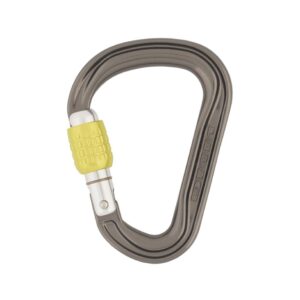
These I use for setting up belays on multipitch climbs, and for setting up abseils.
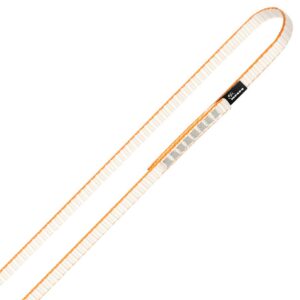
If you are going to do multipitch routes, a few slings are useful for the belay stance. Making a single master point to work from, keeping everything tidy. Also, depending on how well/badly bolted a route can be, to have a few 120cm slings can be useful to reduce rope drag, by extending some of the protection.
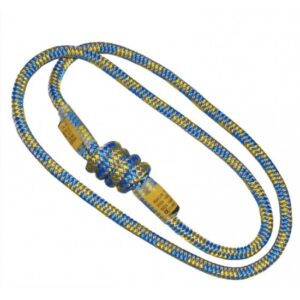
The prussik loop is so versatile, as it allows for hoisting a partner who is struggling on a move, escape the system if your partner is in trouble, prussik up and down the rope, and have a braking hand back-up on abseils. (There is so much more you can do with 2 prussik loops. If you are interested to learn more, please book onto our rope rescue techniques course).
The above are all of the main items which would be included in a sport climbing rack. There are a few optional items, which can be very helpful.
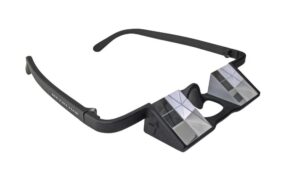
These are an incredible invention. These are glasses with a prism lens on them, which allow you to keep your head straight, whilst giving you the view above you. Having climbed for such a long time, these are a definite must, especially on single pitch climbs. If climbing for a long period of time, these will save you from belayer’s neck syndrome (not the technical term). These glasses will reduce neck strain and pain, especially if you belay regularly.
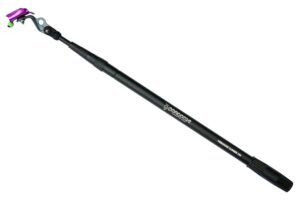
A clip stick is a device, which allows you to clip a quickdraw with a rope to a bolt above you. Allowing for moves low down to be protected, or for cruxes to be protected, if stuck. These are a great tool, especially if you are climbing on or above your physical or mental limit.
If you would like more information on any of the above, or would like to book onto one of our climbing courses, please feel free to contact us.